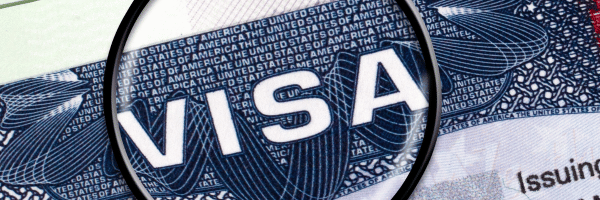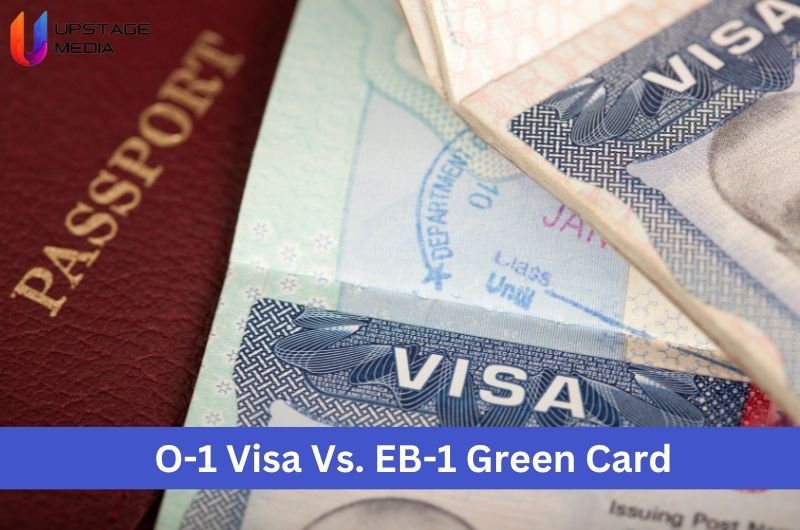Table of Contents
The O-1 visa and the EB-1 green card are both extremely accessible visa choices for overseas workers, but it is critical to understand the difference Between an O-1 Visa and an EB-1 Green Card and the benefits of each. If you plan on changing your status from O-1 to EB-1, there will be different changes that each applicant must properly understand.
Differences Between the O-1 Visa and the EB-1 Green Card
The O-1 Visa is a dual-purpose non-immigrant visa category that allows persons to petition for permanent residency in the United States. It permits the bearer to stay in the US for three years before returning home or requesting an extension.
The EB-1 Visa Green Card Process that permits the applicant to live permanently in the United States. It is an immigrant visa that permits the individual to live, work, and remain in the United States indefinitely. They can also purchase property in the nation.
Sponsorship and Family Differences – O-1 visa vs EB-1
The O-1 visa is a temporary nonimmigrant work visa that allows individuals to be sponsored by a company or organisation, whereas the EB1A visa allows individuals to get a green card and become lawful permanent citizens.
In order for you to enter the nation on an O-1 visa, your US firm must sponsor you. Form I-129 (Petition for Nonimmigrant Workers) and all accompanying documentation must be filed by your company. If you are visiting the United States on an EB-1A visa, you may apply for your own visa by filing Form I-140 (Petition for Alien Worker). A US sponsor is not required for the visa.
An O1 visa requires a business sponsor, but an EB1 petitioner can self-petition. An O1 visa petitioner may also apply for derivatives such as family members such as spouses and children. However, the EB1 does not allow for this.

O-1 to EB-1 Green Card: Why and How?
Review the criteria and check your eligibility before applying for an EB-1 Visa Green Card Process with an O-1 Visa. It is also advised that applicants file for the EB-1 Visa when they approach the height of their professions, because the USCIS wants to know how they can contribute more in their field of expertise.
1. Petition by an Employer
Employers must file a petition for the applicant, exactly as they did for the O-1 Visa. This petition should be filed using the Immigrant Petition for an Alien Worker (I-140 Form), together with the necessary proof.
2. Self-Petition
If you already have an O-1 visa and a job, you will just need to alter your status from O-1 to EB-1 without changing jobs. To self-petition for the EB-1 green card, the applicant must file the I-140 form with the USCIS and wait for their processing.
3. National Interest Waiver
Another option to apply for the EB-1 via the O-1 Visa is to demonstrate that the applicant’s work is of national importance. The candidate must be able to demonstrate that their work has substantial inherent worth and that their accomplishments are of national importance.
Benefits of O-1 Visa compared to EB-1:
- O-1 visas typically have a shorter processing period than EB-1 visas.
- There are no priority dates for O-1 visas, therefore you do not have to wait for a visa number to become available.
- O-1 visas are offered to persons in a variety of disciplines, including the arts, sciences, business, athletics, and education, whereas EB-1 visas are intended for individuals with exceptional skill in certain categories.
- O-1 visas are originally given for up to three years, giving flexibility for shorter-term projects or commitments.

Disadvantages of O-1 Visa compared to EB-1:
- O-1 visas are temporary and must be renewed, but EB-1 visas provide the chance for permanent residency.
- O-1 visas have less family-based advantages than EB-1 visas, such as derivative status for spouses and children.
- The O-1 visa criteria for proving outstanding ability might be stringent, and extensive evidence of success may be required.
- O-1 visas have numerical limitations, which are often larger than the yearly quotas for specific EB-1 categories.
Read More : Get Featured On Publications To Qualify For An O1 Visa & Eb1 Visa
O-1 to EB-1 Processing Time
It is typically best to file for your EB-1 while your O-1 is still valid. Otherwise, if you are regarded “out of status,” you may face legal problems.
The entire processing time for an EB-1 visa varies. The procedure can take up to a year depending on an applicant’s ability to accurately complete documents, the USCIS adjudication time, and whether the applicant uses premium processing. The overall processing period is usually between six and eight months.
Checklist for EB-1 Green Card
To show your outstanding talent in the EB-1 category, you must meet three of the 10 requirements listed by the USCIS.
- Acceptance of lesser-known national or international medals or accolades for excellence
- Your participation in professional organisations that expect great performance from its members
- Published information about you in professional or big trade magazines, as well as in other important media
- Evidence that you have been asked to evaluate the work of others, either individually or as part of a group.
- Significant original scientific, academic, artistic, athletic, or business contributions to the field
- Your publishing of scholarly works in professional or big trade magazines, as well as other important media
- Your success in a leadership or essential role in prestigious organisations
- Evidence showing you command a high salary or other considerably higher pay in comparison to others in your profession.
- Your commercial accomplishments in the performing arts
Read More : The Role of PR in O1 Visa and Eb1 Visas.
Understanding the EB-1 Category

The EB1 visa category is for priority workers who desire to immigrate to the United States permanently. It is divided into three subcategories to accommodate different sorts of workers:
1. First preference (EB-1A) – workers with high priority
EB1A is reserved for those with exceptional skills in the sciences, arts, education, business, or athletics. Outstanding professors and researchers; or Certain multinational CEOs and managers.
2. Second choice (EB-1B)
People with advanced degrees or remarkable talent who are members of the professions (including requests for national interest exemptions).
EB1B for exceptional academics and researchers
3. Third preference (EB-1C)
Skilled workers, professionals, or other workers are the third priority (EB-1C). EB-1C visas are available for international leaders and managers looking to establish an organisation in the United States.
Obtaining an O-1 Visa
PR in Strengthening O1- Visa typically allows a foreign worker to stay in the nation for an initial duration of one to three years. The O-1 visa is also appealing to people who operate in the same specialist sectors as the EB-1.
O-1 candidates must submit three pieces of proof that demonstrate their aptitude and ability. These usually allude to the applicant’s outstanding achievements in his or her area. O-1B visas are typically granted to foreign workers who want to work in the entertainment business, such as art, television, or theatre.
Conclusion
To speed up the EB-1 Visa Green Card Process and minimise unnecessary delays, visa applicants should always seek the competent assistance of immigration attorneys.

